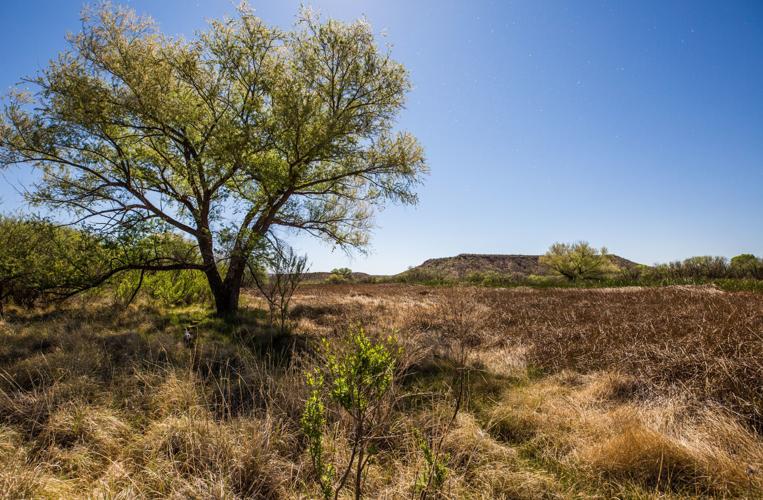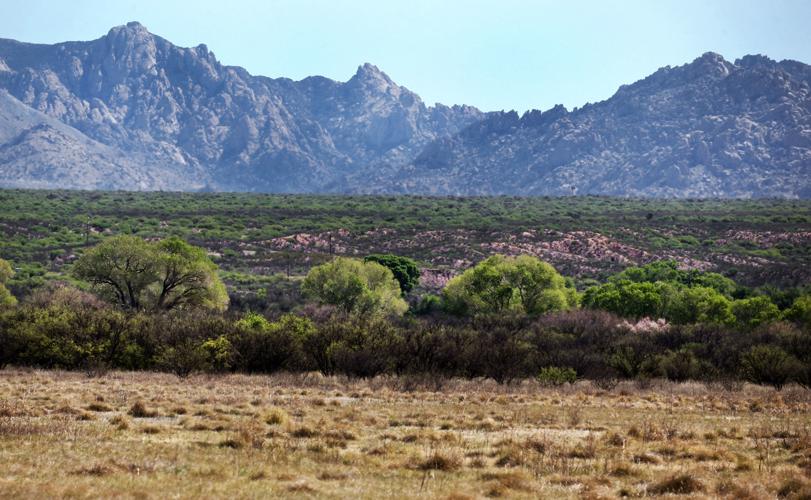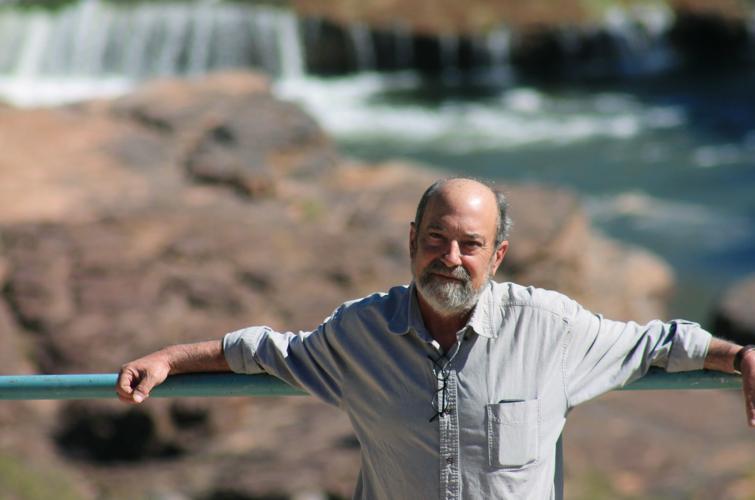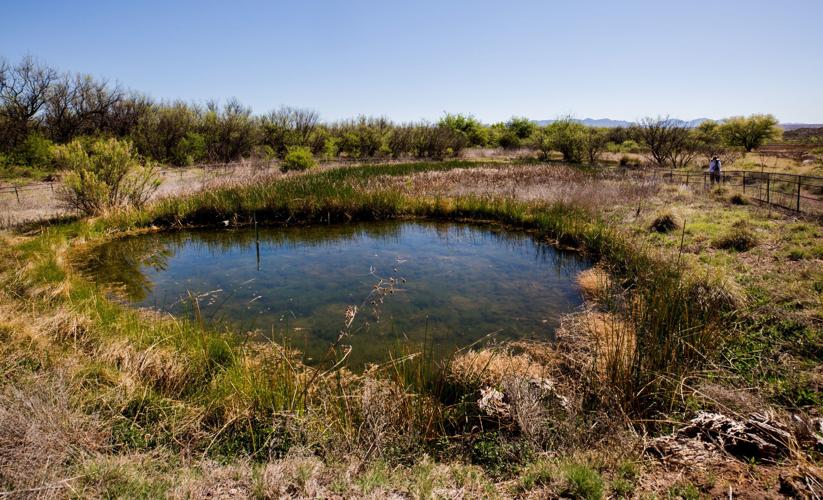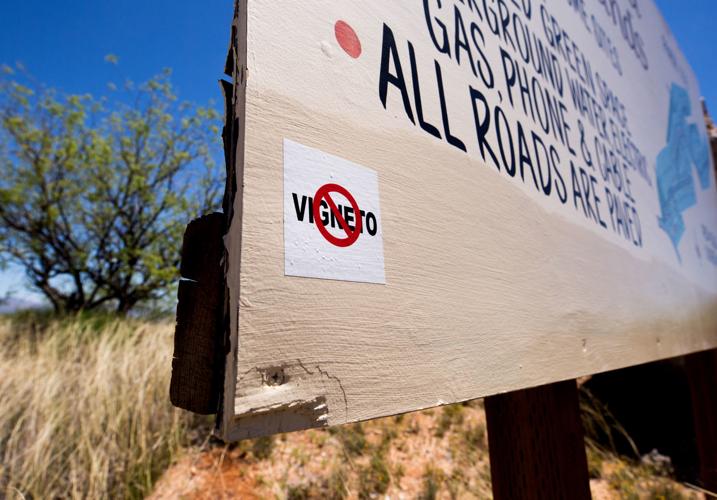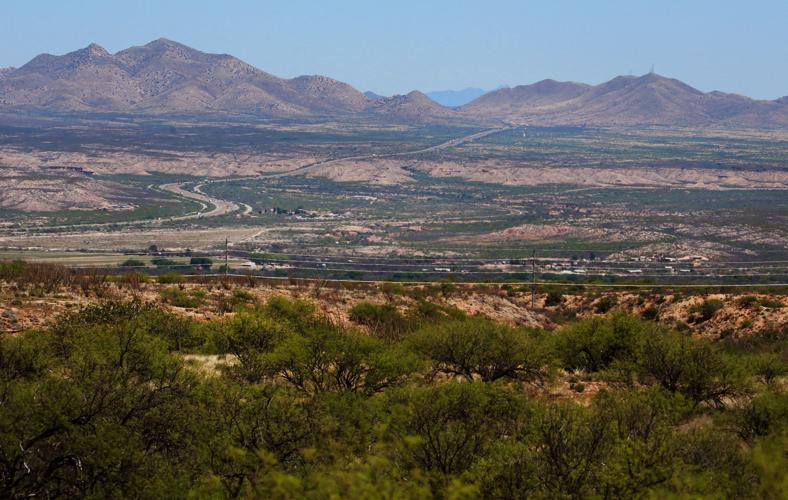A now-retired federal official said he bowed to political pressure from a higher-up in the Trump administration when he reversed a key decision he had made on a 28,000-home Benson development near the San Pedro River.
ŌĆ£I got rolled,ŌĆØ said Steve Spangle, who was a top U.S. Fish and Wildlife Service official in Phoenix.
A ŌĆ£high-level politicoŌĆØ at the Interior Department pressured him through an attorney in its SolicitorŌĆÖs Office, Spangle told the ├█Ķųų▒▓ź in a recent interview.
SpangleŌĆÖs resulting reversal on the Villages at Vigneto development, in a letter to the U.S. Army Corps of Engineers in October 2017, smoothed the projectŌĆÖs path to get its federal Clean Water Act permit.
His earlier 2016 decision would have required a detailed biological analysis of the proposed developmentŌĆÖs impacts on endangered species. Rescinding it allowed the Corps to issue the permit without the lengthy analysis.
People are also reading…
By ŌĆ£rolled,ŌĆØ Spangle said he meant: ŌĆ£I made a decision that was in my purview to make. I was overruled by somebody who didnŌĆÖt have my kind of experience. I used that phrase to distinguish it from making a policy call based on fact, as opposed to making a policy call based on politics. I had a strong feeling this was a political decision on their part.ŌĆØ
Interior spokesman denies allegations
In response to SpangleŌĆÖs allegation, the Interior Department issued a statement Friday explaining and defending the wildlife serviceŌĆÖs policy switch on Vigneto.
Asked if the departmentŌĆÖs SolicitorŌĆÖs Office put pressure on Spangle to reverse his stance, a spokesman issued a one-word denial: ŌĆ£No.ŌĆØ
The reversal occurred simply because the service got additional information about the project from the Corps and the developer, the Interior spokesman said.
Concerns about San PeDro impacts
At issue is a 12,324-acre project whose homes, golf course, resort and commercial and office development would flank both sides of ├█Ķųų▒▓ź 90, 2 miles south of Interstate 10 and 4 miles southwest of downtown Benson.
The projectŌĆÖs Phoenix-based developer, El Dorado Holdings Inc., has said Vigneto is inspired by the Tuscany hill country of Italy in its ŌĆ£impressive array of cultural, social and recreational amenities and natural landscape.ŌĆØ
El Dorado has promoted Vigneto as a self-sufficient development, with schools, a large trail network, bars, restaurants, shops, banks, day care centers and the like, as well as homes.
Environmentalists have fought the project for four years, mainly out of concern that its groundwater pumping will dry up parts of the San Pedro River, including the nearby St. David Cienega.
The cienega is the only marshland left in the riverŌĆÖs federally protected conservation area, running 40 miles south from Benson. The river lies 4 miles east of the Vigneto site.
Spangle himself has long expressed concerns about the projectŌĆÖs impacts on the San Pedro. He shared the concerns in letters to the Corps dating back to 2004.
But in his decision reversal in 2017, he tempered that view, saying, ŌĆ£Our concerns remain, but the legal situation required us to retract that positionŌĆØ that VignetoŌĆÖs impacts must be thoroughly analyzed before the permit was granted.
The Corps issued the Vigneto permit in November 2018. In February, however, it suspended the permit for additional review, less than two weeks after a second lawsuit was filed against the Corps over its permitting for the project.
By then, Spangle was retired, having taken a buyout from the wildlife service on March 31, 2018.
First such pressure in his career
SpangleŌĆÖs recent comments to the Star amount to a rare public complaint by a federal official of political intervention into an endangered species case.
He said he wasnŌĆÖt ordered to reverse his decision. But he was told ŌĆ£a couple weeksŌĆØ before writing his October 2017 letter, by the SolicitorŌĆÖs Office, that if he knew what was good for him politically at his job, he would do it, he said.
ŌĆ£I was told by an attorney there that a high-level politico in the Department of Interior had told the attorney to call me and said that, ŌĆśSpangle is out to lunch and needs to rescind the call,ŌĆÖŌĆØ Spangle said.
ŌĆ£I received a call from Washington that thatŌĆÖs the wrong call,ŌĆØ Spangle added, referring to his earlier decision on Vigneto.
He said he didnŌĆÖt know or ask who the high-level Interior figure was, and that he would not release the name of the SolicitorŌĆÖs Office attorney who called him to get the decision reversed.
ŌĆ£She is a friendŌĆØ and Spangle doesnŌĆÖt want to get her in political hot water, he told the Star.
ŌĆ£She was strongly encouraged to call me and point out the error of my ways,ŌĆØ Spangle said of the attorney. ŌĆ£My job is that I work for the administration. The administrationŌĆÖs position takes precedence over mine.ŌĆØ
But the pressure he got to reverse his decision was the first he ever experienced in 34 years with the federal government, Spangle said. That included 29 years with the wildlife service under five presidents going back to President George H.W. Bush.
In his last 15 years with the service, Spangle was field supervisor of its ├█Ķųų▒▓ź Ecological Services office, based in Phoenix. There, he had decision-making authority over most endangered species issues handled by the service in this state.
The pressure exerted about Vigneto contributed to SpangleŌĆÖs decision to retire, he said.
ŌĆ£I know how the system works. I wasnŌĆÖt used to this particular political atmosphere that struck me as fairly foreboding if I was to stay on the job,ŌĆØ said Spangle, who turned 65 last November. ŌĆ£So when the buyout offer came, all signs were pointing to the decision to retire.ŌĆØ
Spangle cited risks to imperiled species
SpangleŌĆÖs comments have their roots in a tangled case of controversy and litigation dating back more than a decade.
The Corps had granted the project, then under a different owner and called Whetstone Ranch, a Clean Water Act permit in 2006 to build on about 8,000 of the 12,324 acres now planned for the development. But the project stalled for most of the next decade due to the SouthwestŌĆÖs real estate crash.
El Dorado Holdings resurrected the project in 2015 after buying the land from the previous owner, and named it Villages at Vigneto.
Before construction could begin, the Corps suspended the permit in July 2016 after being sued by environmentalists over its failure to consult with the wildlife service on the projectŌĆÖs impacts on endangered species.
In October 2016, Spangle wrote to the Corps that the service didnŌĆÖt agree with the CorpsŌĆÖ conclusion that the massive project wouldnŌĆÖt harm the Western yellow-billed cuckoo and the Northern Mexican garter snake, both threatened species, or their proposed critical habitat.
Discussing the entire, 12,324-acre site, Spangle wrote that ŌĆ£direct and indirect effects to threatened and endangered species, including proposed and final critical habitat, are reasonably certain to occur.ŌĆØ
For example, itŌĆÖs likely that pumping of ŌĆ£an appreciable volume of groundwaterŌĆØ for the development will reduce flow in sections of the San Pedro River that already are designated as critical habitat for the endangered Southwestern willow flycatcher and are proposed critical habitat for the garter snake and cuckoo, Spangle wrote.
Plus, because VignetoŌĆÖs size is much larger than what the Corps permitted in 2006.
ŌĆ£We are concerned that the (project) will be implemented in a piecemeal manner that does not include analyses of its full environmental impact,ŌĆØ Spangle told the Corps.
Before the wildlife service could begin its own review of the project, it needed the Corps to do a full-scale biological assessment of the development and its mitigation efforts, he said.
That letter was his third in 13 years to the Corps raising concerns about the project.
In July 2004, Spangle wrote that service officials ŌĆ£are particularly concerned about potential effects to the ecosystems of the San Pedro River, which support a diverse array of fish and wildlife resources, including threatened and endangered species.ŌĆØ
In July 2015, Spangle laid out detailed concerns about VignetoŌĆÖs potential impacts to the cuckoo and the garter snake, and asked the Corps to re-evaluate its 2006 permit decision. He also urged the Corps to start a formal review of the endangered species impacts.
Again, he cited potential threats to the river, in areas downstream of Benson, due to groundwater pumping for the project lowering the water table directly connected to the river.
Interior says broad analysis wasnŌĆÖt needed
But in his October 2017 reversal letter, Spangle wrote that the Corps now could substantially limit its scope of analysis.
It would only have to examine the impacts of the projectŌĆÖs discharge of fill material into 51 acres of washes on site, and the preservation of more than 1,600 acres on and off site to compensate for the discharge work.
Spangle was told to make the switch based on statements by the developer and the Corps that the project could be built whether the permit was issued or not, he told the Star in the recent interview.
Just a month before Spangle wrote his letter, developer El Dorado Partners had told the Corps that it was technically feasible to develop the site without a permit, and that it intended to do that if necessary.
A May 2017 Corps report had reached the same conclusion, Spangle wrote in his October letter.
That meant a full-scale review of the entire project wasnŌĆÖt legally needed, Spangle wrote. He wrote that he now also agreed with the Corps that VignetoŌĆÖs activities, authorized by the permit, werenŌĆÖt likely to harm the cuckoo, garter snake or the flycatcher, or damage their critical habitat.
In the Interior DepartmentŌĆÖs statement Friday to the Star, a spokesman repeated the details of the September 2017 letter from El Dorado.
The spokesman noted that originally, the Corps had only sought the wildlife serviceŌĆÖs comments on the impacts of the projectŌĆÖs mitigation efforts. But the serviceŌĆÖs position was that the mitigation work was directly related to the entire development.
Because the permit wasnŌĆÖt needed for the development itself, the development could no longer be considered related to the mitigation work. That removed the need for analyzing the entire project, the Interior spokesman said.
Why pursue ŌĆ£unnecessaryŌĆØ permit?
At the time, environmentalists with the ├█Ķųų▒▓ź-based Center for Biological Diversity and other groups were outraged at SpangleŌĆÖs reversal.
They asked: If the Clean Water Act permit wasnŌĆÖt needed for Vigneto to be built, why was El Dorado Holdings applying for it?
El Dorado spokesman Mike Reinbold didnŌĆÖt respond to questions from the Star back then about why it was pursuing the permit if it wasnŌĆÖt required for Vigneto to move forward.
ŌĆ£Let me ask you a question: What does it matter?ŌĆØ Reinbold said in a fall 2017 interview.
In SpangleŌĆÖs recent interview, he told the Star the criticsŌĆÖ question about why El Dorado bothered to apply for the permit if it didnŌĆÖt need it ŌĆ£is exactly the question I have. If itŌĆÖs just as feasible to build without a permit, why did they even subject themselves to the process?ŌĆØ
ŌĆ£Anti-environment administrationŌĆØ
SpangleŌĆÖs reversal under pressure on Vigneto was one of many things he didnŌĆÖt like about the direction the Interior Department was taking in the Trump administration, which was nine months old at the time, he said.
ŌĆ£I saw policies in place or on the way that would be detrimental to national parks, the BLM and the Fish and Wildlife Service,ŌĆØ Spangle said.
ŌĆ£The Trump Administration is different from past Republican administrations ŌĆö much more anti-regulatory and much more anti-environment ŌĆ” plain and simple, anti-environment.
ŌĆ£I miss the days of George W. Bush and Barack Obama and every other president,ŌĆØ he said.
He cited the Trump administrationŌĆÖs size reductions of national monuments declared under Obama, and its loosening of restrictions on oil drilling on public lands, as decisions he particularly didnŌĆÖt like.
He also cited the administrationŌĆÖs reversal of a longstanding policy to prosecute oil and mining companies and others under the Migratory Bird Treaty Act for inadvertent killings of birds that land in their pits and die.
Said Spangle: ŌĆ£The whole direction the Department of Interior was going in was absolutely the opposite direction of where I thought it should be.ŌĆØ


